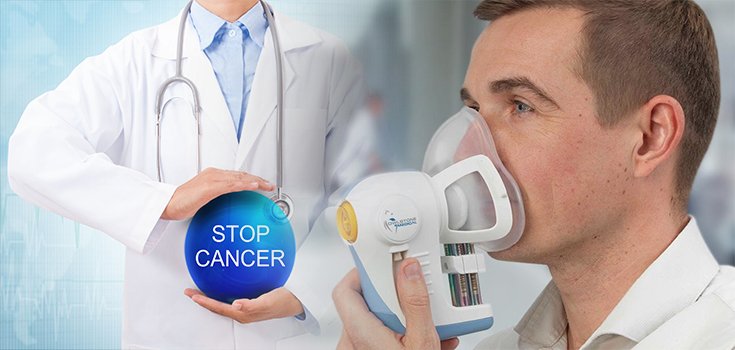Early Detection: Scientists are Working on a Cancer-Detecting ‘Breath Test’

Detecting cancer most often requires a biopsy, which can be painful and tough to recover from. Often, cancer is not diagnosed until it is in an advanced stage, as many types of the disease don’t cause symptoms initially. But now, cancer is on its way to becoming diagnosed using a “breath biopsy.” Scientists have been working on a breath test capable of detecting multiple types of the disease. [1]
Research shows that a human’s breath contains carbon dioxide, nitrogen, and oxygen, in addition to more than 100 chemical compounds, some of which form cancerous patterns.
Billy Boyle, co-founder and CEO at Owlstone Medical, which developed the device, said: [2]
“Our goal is, can we spot these subtle differences?’
Diseases Have Smells?
The body emits signature smells associated with several illnesses. For example, typhoid fever reportedly smells like baked bread, while the aroma of acetone – similar to rotten apples – can be detected on the breath of people with diabetes.
Researchers hope the Breath Biopsy technology will be able to detect similar cancer-linked odors on people’s breath.
Cancer Research UK has launched a 2-year clinical trial of the Breath Biopsy device to find out if the non-invasive technology could one day replace more invasive biopsies.
The first participants to test the new technology are patients with stomach and esophageal cancers. The trial will eventually be expanded to include those with prostate, kidney, bladder, liver, and pancreatic cancers.

Participants will be asked to breathe into the device for 10 minutes to provide a sample, which will be analyzed by Owlstone Medical’s laboratory in Cambridge.
The researchers will look to see if cancer signals are similar or different and how any early signs could be detected. If some participants go on to develop cancer, researchers will compare those samples to samples from participants who did not go on to develop the disease.
Professor Rebecca Fitzgerald, lead trial investigator at the Cancer Research UK Cambridge Centre, said in a statement:
“We urgently need to develop new tools, like this breath test, which could help to detect and diagnose cancer earlier, giving patients the best chance of surviving their disease.”
Boyle explained that 85% of lung cancers are diagnosed at a late stage “and they will die in 1 or 2 years [because] by the time doctors diagnose it, it is too late.”
In 2017, clinical trials of a breath test proved highly effective, showing 85% accuracy in detecting esophageal cancer. In 2016, a similar device was able to detect prostate cancer in men using a gas chromatography sensor system to “smell” the disease. [1]
Boyle said:
“There is increasing potential for breath-based tests to aid diagnosis, sitting alongside blood and urine tests in an effort to help doctors detect and treat disease. The concept of providing a whole-body snapshot in a completely non-invasive way is very powerful and could reduce harm by sparing patients from more invasive tests that they don’t need.”
The theory behind the Breath Biopsy technology is actually 2-pronged: Just as all humans have unique fingerprints, each person also has a unique chemical “fingerprint.” And each disease has its own chemical signature that can be detected on the breath. [2]

The widespread interest in breath analysis comes from the discovery, only made in the past 20 years, that nitric oxide works as a signaling molecule in the cardiovascular system.
Fitzgerald said: [1]
“Through this clinical trial we hope to find signatures in breath needed to detect cancers earlier – it’s the crucial next step in developing this technology. Owlstone Medical’s Breath Biopsy technology is the first to test across multiple cancer types, potentially paving the way for a universal breath test.”
Sources:
[1] UPI
[2] CNN
